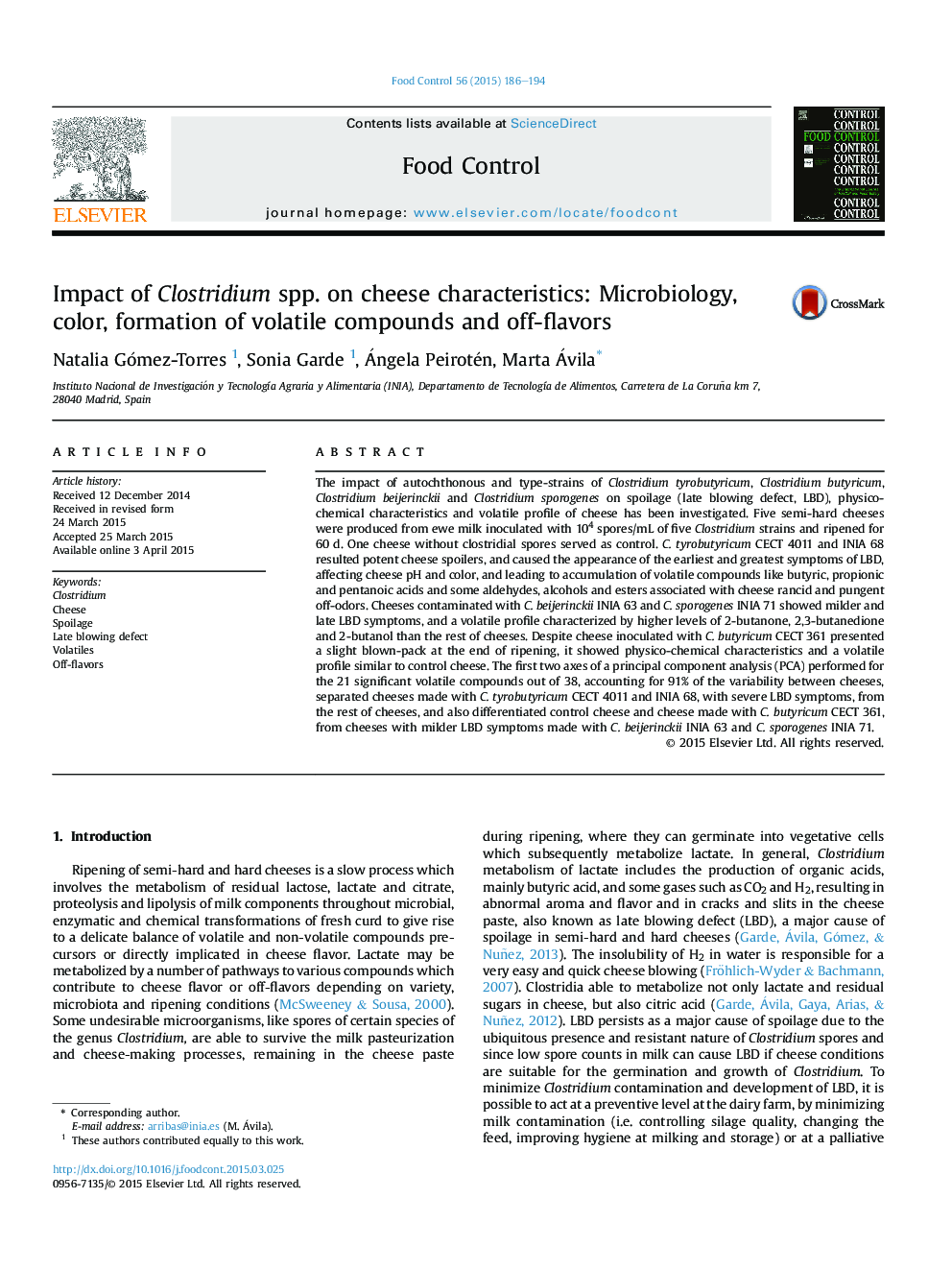| کد مقاله | کد نشریه | سال انتشار | مقاله انگلیسی | نسخه تمام متن |
|---|---|---|---|---|
| 4559234 | 1628406 | 2015 | 9 صفحه PDF | دانلود رایگان |

• Cheeses were made from milk deliberately contaminated with five Clostridium strains.
• Cheeses with clostridia showed late blowing defect at different stages of ripening.
• Clostridium tyrobutyricum were potent spoilers and markedly affected cheese volatile profile.
• Clostridium beijerinckii and Clostridium sporogenes produced belated and milder cheese spoilage.
• Clostridium butyricum strain action on cheese was weak and did not caused substantial spoilage.
The impact of autochthonous and type-strains of Clostridium tyrobutyricum, Clostridium butyricum, Clostridium beijerinckii and Clostridium sporogenes on spoilage (late blowing defect, LBD), physico-chemical characteristics and volatile profile of cheese has been investigated. Five semi-hard cheeses were produced from ewe milk inoculated with 104 spores/mL of five Clostridium strains and ripened for 60 d. One cheese without clostridial spores served as control. C. tyrobutyricum CECT 4011 and INIA 68 resulted potent cheese spoilers, and caused the appearance of the earliest and greatest symptoms of LBD, affecting cheese pH and color, and leading to accumulation of volatile compounds like butyric, propionic and pentanoic acids and some aldehydes, alcohols and esters associated with cheese rancid and pungent off-odors. Cheeses contaminated with C. beijerinckii INIA 63 and C. sporogenes INIA 71 showed milder and late LBD symptoms, and a volatile profile characterized by higher levels of 2-butanone, 2,3-butanedione and 2-butanol than the rest of cheeses. Despite cheese inoculated with C. butyricum CECT 361 presented a slight blown-pack at the end of ripening, it showed physico-chemical characteristics and a volatile profile similar to control cheese. The first two axes of a principal component analysis (PCA) performed for the 21 significant volatile compounds out of 38, accounting for 91% of the variability between cheeses, separated cheeses made with C. tyrobutyricum CECT 4011 and INIA 68, with severe LBD symptoms, from the rest of cheeses, and also differentiated control cheese and cheese made with C. butyricum CECT 361, from cheeses with milder LBD symptoms made with C. beijerinckii INIA 63 and C. sporogenes INIA 71.
Journal: Food Control - Volume 56, October 2015, Pages 186–194